By Shabana Begum, The New Paper, 28 May 2019 at 06:00 am

PHOTO: Minister for National Development Lawrence Wong at the Sang Nila Utama Garden.
Nine historical gardens open to recreate scenes of Singapore's past. A stroll in Fort Canning Park will now take visitors on a journey back in time.
Picture posted by Shabana Begum, The New Paper on 28 May 2019 at 06:00 am
https://blogger.googleusercontent.com/img/b/R29vZ2xl/AVvXsEjAVCjj7m9Wwf0W5rJ4JYyTaAcJij-XI018NyGYkpDUdxpXnsr6DAvBmvp8EEEAmjpy66gkS5qfUS-_rz3MG-05QGF6qmWZxChhZj-6uwsX4DrexT4AZYvQIH6tFWtKXExxnN8-tclsRgI/s1600/NP_20190528_SBFORT28RZP7_4871199.jpg
https://www.tnp.sg/sites/default/files/styles/rl780/public/articles/2019/05/28/NP_20190528_SBFORT28RZP7_4871199.jpg?itok=23mIptuv
https://www.tnp.sg/news/singapore/go-back-time-nine-new-gardens-fort-canning-park
Nine historical gardens, launched yesterday, recreate the days when 14th-century kings such as Sang Nila Utama had their palaces high on the hill, while royal women bathed in a freshwater spring.
They also recreate the 1800s, when cash crops such as nutmeg, clove and rambutan were grown on a 20ha plantation next to the park.
In February last year, Minister for National Development Lawrence Wong announced enhancements to be made to Fort Canning Park to highlight its history and make the hill more accessible to visitors.
The gardens, spanning 8ha of the 18ha park, consist of Pancur Larangan (Forbidden Spring), Artisan's Garden, Sang Nila Utama Garden, Raffles Garden, Farquhar Garden, Jubilee Park, First Botanic Garden, Spice Garden and Armenian Street Park.

PHOTO: Armenian Street Park
Under a multi-agency project, part of Armenian Street was pedestrianised earlier 2019 to create a new park and public space for people and events, as part of larger plans to connect Fort Canning Park, Bras Basah, Bugis, and the Civic District together to form an expanded arts, cultural and heritage precinct. A planting scheme that relates to the site context creates synergies between the outdoors and the surrounding buildings, such as the Peranakan Museum and Armenian Church.
Picture posted by National Parks Board on 27 May 2019
https://blogger.googleusercontent.com/img/b/R29vZ2xl/AVvXsEjQgXk4og3pJpYhhtCkMGW3qVyDmrltazztX97z0I0p9LXn-7FukBovYaUabyLTRaYACBGcXKFR4osv-zdEAmwclg6OtHCoS9SQfll_k54eL5X1QYStOEnzCuDUWNgzT_XlB4Ei_ycxbyc/s1600/Armenian+Street%252C+which+was+pedestrianised+earlier+last+year+to+create+a+park+and+open+space+for+events+%2528Credit+National+Parks+Board%2529.jpg
https://www.nparks.gov.sg/-/media/fort-canning-media/gardens/armenian-street,-which-was-pedestrianised-earlier-last-year-to-create-a-park-and-open-space-for-events-(credit-national-parks-board).jpg
https://www.nparks.gov.sg/

PHOTO: Farquhar Garden
The Farquhar Garden is named after Major-General William Farquhar, the first British Resident and Commandant of Singapore. As a keen naturalist, Farquhar commissioned and compiled natural history drawings of the unique wildlife he encountered in the Malay Peninsula. In this garden, visitors are invited to explore and interact with some of the species that Farquhar found noteworthy through ‘living paintings’ in giant frames. Examples include guava, jujube, taro and gambier.
Picture posted by National Parks Board on 27 May 2019
https://blogger.googleusercontent.com/img/b/R29vZ2xl/AVvXsEjiSEmBfkwA2HGiqmEKMp3fNfR7KJFtV4AfTWnsGrbVMYoj5_bUfN5c7ed5brInfNm8gKtRF82AHEI5Boki-4DL-tPO8JANewH5lNJnsWVBgkDBHJI6eXy7gXFlmVXUDBlHQq03J453HYM/s1600/Farquhar+Garden%252C+named+after+Major-General+William+Farquhar%252C+who+was+a+keen+naturalist+%2528Credit+National+Parks+Board%2529.jpg
https://www.nparks.gov.sg/-/media/fort-canning-media/gardens/farquhar-garden,-named-after-major-general-william-farquhar,-who-was-a-keen-naturalist-(credit-national-parks-board).jpg
https://www.nparks.gov.sg/

PHOTO: Jubilee Park (Phase 1)
Jubilee Park sits on the western slope of Fort Canning Park, which used to host a range of recreational options for Singaporeans, such as River Valley Swimming Pool, Van Kleef Aquarium and the National Theatre in the 20th century. At one time, it also had play features such as swings.
Picture posted by National Parks Board on 27 May 2019
https://blogger.googleusercontent.com/img/b/R29vZ2xl/AVvXsEgjSyTdxdHREKgblJAHaiLlGdaSQRFWy9TmIi4czugfxdgKo_QK3GP1_qxUWoXtQUfPJOZBn4n2Twh0DyahaRBwesRD_iy_nWhF7XStmdcR38c8qynqCA9XLpZ6lZCUPgaB3pKn4cGiEhk/s1600/Escalators+installed+at+Fort+Canning+Park+to+enhance+accessibility+at+the+hill+%2528Credit+National+Parks+Board%2529.jpg
https://www.nparks.gov.sg/-/media/fort-canning-media/gardens/escalators-installed-at-fort-canning-park-to-enhance-accessibility-at-the-hill-(credit-national-parks-board).jpg
https://www.nparks.gov.sg/

PHOTO: The Jubilee Park
This green space at the foot of Fort Canning Hill has been restored as a family-friendly node where children can play with swings, see-saws, logs and slides hugging the hill slope. There is also space for outdoor art installations, performances and events.
PHOTOS: LIANHE WANBAO
Picture posted by Shabana Begum, The New Paper on 28 May 2019 at 06:00 am
https://blogger.googleusercontent.com/img/b/R29vZ2xl/AVvXsEiqcXYU85x7yApB_4YiMP2vu39GOdHjCNY4yFi1d5fItoeIwlXl6BwpC5aDerHSKQ0PfIwoF_Tn8pmMhfvjosH0GyApIT9GfQtJEVlLW3JZSaqVkEzLUqx7ZFLHVTFVFIJVkL_YJo2fl0k/s1600/NP_20190528_SBFORT28_4871197_1.jpg
https://www.tnp.sg/sites/default/files/styles/rl780/public/articles/2019/05/28/NP_20190528_SBFORT28_4871197.jpg?itok=y_O_gywn
https://www.tnp.sg/news/singapore/go-back-time-nine-new-gardens-fort-canning-park

PHOTO: Pancur Larangan (or the Forbidden Spring)
A freshwater spring used to flow from the face of Fort Canning Hill at this location. In ancient times, it was known as Pancur Larangan, or the ‘Forbidden Spring’ as it was used as a bathing place by the noble ladies of the royal court of Singapura. This ancient bath, which would have been an important part of the palace, has been re-created in the 14th-century Javanese style.
Picture posted by National Parks Board on 27 May 2019
https://blogger.googleusercontent.com/img/b/R29vZ2xl/AVvXsEjHnJco_U2FgQzXbXD9W1F3KoMs5GW0eRWWcoE-xhExja6uKYrYEW_YZ1Y5WqXgzzAlaKVA_ENWgAAaMOEGW2JbbvZ5hF71WIMUAV9Kh7V6ejCdYm-GqlzbDcGpHukK_3OG0StEqMq7TKo/s1600/Stone+mural+at+Pancur+Larangan+which+depicts+life+in+Fort+Canning+Park+from+the+14th+to+the+19th+century+%2528Credit+National+Parks+Board%2529.jpg
https://www.nparks.gov.sg/-/media/fort-canning-media/gardens/stone-mural-at-pancur-larangan-which-depicts-life-in-fort-canning-park-from-the-14th-to-the-19th-century-(credit-national-parks-board).jpg
https://www.nparks.gov.sg/

PHOTO: Raffles Garden
This garden is named after Sir Stamford Raffles (1781–1826), the founder of modern Singapore. Whilst Raffles is most remembered for his public life in the former British colonies in Southeast Asia, he was also an avid naturalist, who spent his free time studying botany and wildlife.
Inspired by his love for plants, the Raffles Garden showcases the diverse plant species that Raffles encountered in Southeast Asia. It includes species collected, studied or planted by Raffles and his fellow naturalists, some of whom were also his closest friends.
Picture posted by National Parks Board on 27 May 2019
https://blogger.googleusercontent.com/img/b/R29vZ2xl/AVvXsEi97y9lS1rLh_bBHGiPFaUMNDbc2qtlhfed_5_uZ_k8K_eBus34qRzbVFTf5T93PttKEEiEaahhfDeDhLxOgCOKGL6ubwy1QipzBLTw2ZzGk23XPOYmMdNxywf0nJVR_5WtZZ-p0ej-iqU/s1600/Raffles+Garden%252C+named+after+Sir+Stamford+Raffles+showcases+plants+that+were+collected+or+studied+by+him+%2528Credit+National+Parks+Board%2529.jpg
https://www.nparks.gov.sg/-/media/fort-canning-media/gardens/raffles-garden,-named-after-sir-stamford-raffles-showcases-plants-that-were-collected-or-studied-by-him-(credit-national-parks-board).jpg
https://www.nparks.gov.sg/

PHOTO: Sang Nila Utama Garden
The Sang Nila Utama Garden is named after the first ancient king of Singapore and reimagines the Southeast Asian gardens of old. Such gardens were integral parts of palaces such as the one which stood on this hill in the 14th century. The garden has traditional features such as a symmetrical layout typical of these spaces, a series of Javanese split gates that mark the entrance of new zones/’realms’, and a reflective pool which can serve as a meditative refuge.
Ornamentals such as Magnolias, Ixoras and perfume plants such as Gardenias, Vallaris are planted for their significance in ancient Javanese culture. Fruit trees such as Duku, Rambutan & Pomelo are planted too; John Crawfurd recorded seeing giant specimens of these when he first arrived at Fort Canning and concluded that they were likely cultivated by the earlier settlement that lived on the hill.
Picture posted by National Parks Board on 27 May 2019
https://blogger.googleusercontent.com/img/b/R29vZ2xl/AVvXsEi9hhkWACizkhW0_VroJvLytj_az934eKTQHr2a06ul9taKARKJJl6mzvX_G8T2Eiqi8rJIFfNXGQKn57l0EcRCvgEZKv1tj37rLO9CSzHmdxkc-QM54PgxlSGipuiqtgN0QID083ReWuM/s1600/Sang+Nila+Utama+Garden%252C+which+is+named+after+the+first+king+of+the+Kingdom+of+Singapura+and+reimagines+the+SE+Asian+gardens+of+old+%2528Credit+National+Parks+Board%2529.jpg
https://www.nparks.gov.sg/-/media/fort-canning-media/gardens/sang-nila-utama-garden,-which-is-named-after-the-first-king-of-the-kingdom-of-singapura-and-reimagines-the-se-asian-gardens-of-old-(credit-national-parks-board).jpg
https://www.nparks.gov.sg/
Making them more exciting is an augmented reality (AR) trail, developed by the National Parks Board (NParks) and National Heritage Board.
It winds through the gardens, allowing visitors to view scenes from as early as 1300 on their smartphones by scanning the AR codes at eight points along the route.
The Sang Nila Utama Garden is a re-creation of South-east Asian gardens of the 14th century. Visitors are welcomed by Javanese split gates and statues of frogs, fish and ducks - fauna that was believed to be seen in the palace gardens.

PHOTO: Visitors are welcomed by Javanese split gates and statues of frogs, fish and ducks - fauna that was believed to be seen in the palace gardens.
Picture saved by quang mai van to a
https://blogger.googleusercontent.com/img/b/R29vZ2xl/AVvXsEhc0cIGVLUaBRT6XQxshp1-i0bFxXjdwjd7Dt_Jyq0Mijv3pDEA4N53oE3l3RyHGUpiIZr3aglTm_q1_xabc49iSF_aB8yr40l4gxwpkdc_HMMf6lQs-n5I2BOTiTpjsn3sRfnefAWuDnI/s1600/7249ccaed75023ed6773d10b2f906639.jpg
https://i.pinimg.com/originals/72/49/cc/7249ccaed75023ed6773d10b2f906639.jpg
https://www.pinterest.com/pin/614530311634515889/
The garden has traditional features such as a symmetrical layout and reflective pools filled with lily pads that used to be a meditative refuge for royalty.
"The intent was to restore landscapes that were known to have existed or could have existed in Fort Canning Park," Mr Wong said at the opening of the gardens yesterday.
"To do so, we consulted archaeologists and historians, and scoured historical records, old photos, maps and letters."
Mr Wong also announced that the second phase of the enhancement plan will be completed in 2021.
A nature play garden and a space to showcase the performing arts will be added to Jubilee Park.
Fort Canning Centre will be repurposed as a heritage gallery, while the foothills will have art galleries and more dining options.
To make Fort Canning Park more accessible to the elderly, families with young children and people with disabilities, covered escalators, pedestrian-friendly walkways and a platform lift have been installed at certain points.

PHOTO: Special Guided Tour for Fort Canning Gardens
Fort Canning Park has 700 years of history, dating from the 12th century right through to the arrival of the British in the 19th century.
Fort Canning Park sits on a hill and spans 19.74 hectares or 197,400 square metres. It is filled not only with history, but also a wide variety of flora and fauna.
One of Singapore’s most historic landmarks which has witnessed Singapore’s golden age, from the time the Malay kings ruled from its peak, and watched as the island transformed over the centuries into the vibrant city-state it is today
Picture posted by National Parks Board on 27 May 2019
https://blogger.googleusercontent.com/img/b/R29vZ2xl/AVvXsEghRgjeWznN1ottdruaPk58yECeHeSLALimI9GXxA6xBuuL4OOtCVcoi_AarA86hbf89LcsJBBbTA7YwgEs-kDW-ahkQnzrUgATv7vzgwvO4UHn2IVWGQjNQafCFb1WtvYOEAVWfvNOAXA/s1600/10FEB-020.JPG
https://www.nparks.gov.sg/-/media/nparks-real-content/fort-canning-park/10feb-020.jpg
https://www.nparks.gov.sg/
The covered escalators connecting Fort Canning MRT station and Bras Basah MRT station to the park have been strategically positioned to increase accessibility to the park, said an NParks spokesman.
Previously, visitors could access the park only by climbing the stairs.
The centrepiece event of the bicentennial, the Bicentennial Experience, will open at Fort Canning Centre on Saturday and run until Sept 15.
The multimedia showcase will take visitors through 700 years of Singapore's history, telling the story through sets, live performances and multimedia elements.

PHOTO: Giant Spiral Staircase of underground crossing in tunnel at Fort Canning Park.
Picture posted by Singapore, Travel Diaries
https://blogger.googleusercontent.com/img/b/R29vZ2xl/AVvXsEiJvNXQmxnzq5WQrUS3Bz_jFY84jdiH2wNHed2_-goufCzI-rYK2qD91hpuKAwSpAmr9_ZR67QwBuF4V7kcrv_gE7lY_Emjb3msVr_KgXmOzejgMiWm5Pm5i6c0NpCsRitlmNvA9Imef2I/s1600/fort-canning-park_21.jpg

PHOTO: Giant Spiral Staircase of underground crossing in tunnel at Fort Canning Park.
Picture posted by 123RF Limited
https://blogger.googleusercontent.com/img/b/R29vZ2xl/AVvXsEhZ4rDi0-FMLd-fVqe1BnE65N2R1xzcMaV7XLjv8Kj82DbHTVsJKGAvxDg8J-JfNyPShsgMMrKRD5upHprLH2LT2dEGFnAaNgDlh1khFkWxIT5NA1vs5w3rLbnjiZ_uuD1RNdNY4ZPbR_k/s1600/85150805-spiral-staircase-of-underground-crossing-at-fort-canning-park-singapore.jpg
https://previews.123rf.com/images/geargodz/geargodz1709/geargodz170900050/85150805-spiral-staircase-of-underground-crossing-at-fort-canning-park-singapore.jpg
https://it.123rf.com/photo_85150805_spiral-staircase-of-underground-crossing-at-fort-canning-park-singapore.html

PHOTO: For a large Asian city, Singapore is surprisingly green. This is Fort Canning park
Gardens are a great example that we reap what we sow. Starting from the Garden of Eden that God provided for Adam and Eve, to gardens we create and maintain today providing food and beauty. Learn the Scripture context of gardens and their deeper meaning from this collection of Bible verses.
"Build houses and settle down; plant gardens and eat what they produce." (Jeremiah 29:5).
"He makes springs pour water into the ravines; it flows between the mountains.
They give water to all the beasts of the field; the wild donkeys quench their thirst.
The birds of the sky nest by the waters; they sing among the branches.
He waters the mountains from his upper chambers; the land is satisfied by the fruit of his work.
He makes grass grow for the cattle, and plants for people to cultivate — bringing forth food from the earth: wine that gladdens human hearts, oil to make their faces shine, and bread that sustains their hearts." (Psalm 104:10-15).
Picture posted by Singapore, Travel Diaries on 09 July 2018
https://blogger.googleusercontent.com/img/b/R29vZ2xl/AVvXsEiRpe1pC-T4MTO2mQj-bsqJqk1wpjGViKsRU4RtTInKx8K1Yc4Gcs6dmVo3_ioXu-YESFKJ9CqdM6OLZFMyZSpjUn093coIZxhiUqOqxNjgR6TrH6lExEF4AtDjz-MLN_dIuwlWhG1qO3k/s1600/Fort-Canning-Park.jpg
https://josiewanders.com/wp-content/uploads/2018/07/Fort-Canning-Park.jpg
https://josiewanders.com/travel-diaries-singapore-our-3rd-gap-year-visit/
Picture posted by Julie Fison, Author of children's and teen fiction - History in the park – Singapore, the Path of Least Resistance, Travel
gif file generated by Animated Images Effects Generator at http://www.webestools.com/animated-images-effect-generator-effects-gif-images-picture-blog-gif-fx-images-animated-effect.html
https://blogger.googleusercontent.com/img/b/R29vZ2xl/AVvXsEihITY5uYfxRA73WCvIbR5bUee7eOxMPzmImcDEBv5t5OxdcnhMEIyyGY57Nt5eQ2xaUxe4D2KawCfVDPP-Ll4SDPmdSLokwPbot0IkUe48teCkeD4URPqd6koHc9tNV4BoZo-2ESlX6l4/s1600/img_9858_11.jpg
https://blogger.googleusercontent.com/img/b/R29vZ2xl/AVvXsEgHjfP1qqW2x51TZJYdxzWBu_8cuSLew4uD-UTbNQbqxVhI32Fk_yAaYzXBZ3vb22tz2oUQZUC7xCCgIvtSuflvWU_56CcV0toaRn9G9lUWPGwAy4ssYfzRdIvaAK1HIz3V0holN_VGtQg/s1600/img_9858_1.gif
https://juliefison.files.wordpress.com/2012/09/img_9858.jpg
https://juliefison.com/2012/09/14/singapore-history-in-the-park/
Get The New Paper on your phone with the free TNP app. Download from the Apple App Store or Google Play Store now
Google Play Store - https://play.google.com/store/apps/details?id=com.sph.mypaperpdf&hl=en
New International Version (NIV), Holy Bible, New International Version®, NIV® Copyright ©1973, 1978, 1984, 2011 by Biblica, Inc.® Used by permission. All rights reserved worldwide.
- https://blogger.googleusercontent.com/img/b/R29vZ2xl/AVvXsEjAVCjj7m9Wwf0W5rJ4JYyTaAcJij-XI018NyGYkpDUdxpXnsr6DAvBmvp8EEEAmjpy66gkS5qfUS-_rz3MG-05QGF6qmWZxChhZj-6uwsX4DrexT4AZYvQIH6tFWtKXExxnN8-tclsRgI/s1600/NP_20190528_SBFORT28RZP7_4871199.jpg
- https://www.tnp.sg/sites/default/files/styles/rl780/public/articles/2019/05/28/NP_20190528_SBFORT28RZP7_4871199.jpg?itok=23mIptuv
- https://www.tnp.sg/news/singapore/go-back-time-nine-new-gardens-fort-canning-park
- https://blogger.googleusercontent.com/img/b/R29vZ2xl/AVvXsEjQgXk4og3pJpYhhtCkMGW3qVyDmrltazztX97z0I0p9LXn-7FukBovYaUabyLTRaYACBGcXKFR4osv-zdEAmwclg6OtHCoS9SQfll_k54eL5X1QYStOEnzCuDUWNgzT_XlB4Ei_ycxbyc/s1600/Armenian+Street%252C+which+was+pedestrianised+earlier+last+year+to+create+a+park+and+open+space+for+events+%2528Credit+National+Parks+Board%2529.jpg
- https://www.nparks.gov.sg/-/media/fort-canning-media/gardens/armenian-street,-which-was-pedestrianised-earlier-last-year-to-create-a-park-and-open-space-for-events-(credit-national-parks-board).jpg
- https://www.nparks.gov.sg/
- https://blogger.googleusercontent.com/img/b/R29vZ2xl/AVvXsEjiSEmBfkwA2HGiqmEKMp3fNfR7KJFtV4AfTWnsGrbVMYoj5_bUfN5c7ed5brInfNm8gKtRF82AHEI5Boki-4DL-tPO8JANewH5lNJnsWVBgkDBHJI6eXy7gXFlmVXUDBlHQq03J453HYM/s1600/Farquhar+Garden%252C+named+after+Major-General+William+Farquhar%252C+who+was+a+keen+naturalist+%2528Credit+National+Parks+Board%2529.jpg
- https://www.nparks.gov.sg/-/media/fort-canning-media/gardens/farquhar-garden,-named-after-major-general-william-farquhar,-who-was-a-keen-naturalist-(credit-national-parks-board).jpg
- https://www.nparks.gov.sg/
- https://blogger.googleusercontent.com/img/b/R29vZ2xl/AVvXsEgjSyTdxdHREKgblJAHaiLlGdaSQRFWy9TmIi4czugfxdgKo_QK3GP1_qxUWoXtQUfPJOZBn4n2Twh0DyahaRBwesRD_iy_nWhF7XStmdcR38c8qynqCA9XLpZ6lZCUPgaB3pKn4cGiEhk/s1600/Escalators+installed+at+Fort+Canning+Park+to+enhance+accessibility+at+the+hill+%2528Credit+National+Parks+Board%2529.jpg
- https://www.nparks.gov.sg/-/media/fort-canning-media/gardens/escalators-installed-at-fort-canning-park-to-enhance-accessibility-at-the-hill-(credit-national-parks-board).jpg
- https://www.nparks.gov.sg/
- https://blogger.googleusercontent.com/img/b/R29vZ2xl/AVvXsEiqcXYU85x7yApB_4YiMP2vu39GOdHjCNY4yFi1d5fItoeIwlXl6BwpC5aDerHSKQ0PfIwoF_Tn8pmMhfvjosH0GyApIT9GfQtJEVlLW3JZSaqVkEzLUqx7ZFLHVTFVFIJVkL_YJo2fl0k/s1600/NP_20190528_SBFORT28_4871197_1.jpg
- https://www.tnp.sg/sites/default/files/styles/rl780/public/articles/2019/05/28/NP_20190528_SBFORT28_4871197.jpg?itok=y_O_gywn
- https://www.tnp.sg/news/singapore/go-back-time-nine-new-gardens-fort-canning-park
- https://blogger.googleusercontent.com/img/b/R29vZ2xl/AVvXsEjHnJco_U2FgQzXbXD9W1F3KoMs5GW0eRWWcoE-xhExja6uKYrYEW_YZ1Y5WqXgzzAlaKVA_ENWgAAaMOEGW2JbbvZ5hF71WIMUAV9Kh7V6ejCdYm-GqlzbDcGpHukK_3OG0StEqMq7TKo/s1600/Stone+mural+at+Pancur+Larangan+which+depicts+life+in+Fort+Canning+Park+from+the+14th+to+the+19th+century+%2528Credit+National+Parks+Board%2529.jpg
- https://www.nparks.gov.sg/-/media/fort-canning-media/gardens/stone-mural-at-pancur-larangan-which-depicts-life-in-fort-canning-park-from-the-14th-to-the-19th-century-(credit-national-parks-board).jpg
- https://www.nparks.gov.sg/
- https://blogger.googleusercontent.com/img/b/R29vZ2xl/AVvXsEi97y9lS1rLh_bBHGiPFaUMNDbc2qtlhfed_5_uZ_k8K_eBus34qRzbVFTf5T93PttKEEiEaahhfDeDhLxOgCOKGL6ubwy1QipzBLTw2ZzGk23XPOYmMdNxywf0nJVR_5WtZZ-p0ej-iqU/s1600/Raffles+Garden%252C+named+after+Sir+Stamford+Raffles+showcases+plants+that+were+collected+or+studied+by+him+%2528Credit+National+Parks+Board%2529.jpg
- https://www.nparks.gov.sg/-/media/fort-canning-media/gardens/raffles-garden,-named-after-sir-stamford-raffles-showcases-plants-that-were-collected-or-studied-by-him-(credit-national-parks-board).jpg
- https://www.nparks.gov.sg/
- https://blogger.googleusercontent.com/img/b/R29vZ2xl/AVvXsEi9hhkWACizkhW0_VroJvLytj_az934eKTQHr2a06ul9taKARKJJl6mzvX_G8T2Eiqi8rJIFfNXGQKn57l0EcRCvgEZKv1tj37rLO9CSzHmdxkc-QM54PgxlSGipuiqtgN0QID083ReWuM/s1600/Sang+Nila+Utama+Garden%252C+which+is+named+after+the+first+king+of+the+Kingdom+of+Singapura+and+reimagines+the+SE+Asian+gardens+of+old+%2528Credit+National+Parks+Board%2529.jpg
- https://www.nparks.gov.sg/-/media/fort-canning-media/gardens/sang-nila-utama-garden,-which-is-named-after-the-first-king-of-the-kingdom-of-singapura-and-reimagines-the-se-asian-gardens-of-old-(credit-national-parks-board).jpg
- https://www.nparks.gov.sg/
- https://blogger.googleusercontent.com/img/b/R29vZ2xl/AVvXsEhc0cIGVLUaBRT6XQxshp1-i0bFxXjdwjd7Dt_Jyq0Mijv3pDEA4N53oE3l3RyHGUpiIZr3aglTm_q1_xabc49iSF_aB8yr40l4gxwpkdc_HMMf6lQs-n5I2BOTiTpjsn3sRfnefAWuDnI/s1600/7249ccaed75023ed6773d10b2f906639.jpg
- https://i.pinimg.com/originals/72/49/cc/7249ccaed75023ed6773d10b2f906639.jpg
- https://www.pinterest.com/pin/614530311634515889/
- https://blogger.googleusercontent.com/img/b/R29vZ2xl/AVvXsEghRgjeWznN1ottdruaPk58yECeHeSLALimI9GXxA6xBuuL4OOtCVcoi_AarA86hbf89LcsJBBbTA7YwgEs-kDW-ahkQnzrUgATv7vzgwvO4UHn2IVWGQjNQafCFb1WtvYOEAVWfvNOAXA/s1600/10FEB-020.JPG
- https://www.nparks.gov.sg/-/media/nparks-real-content/fort-canning-park/10feb-020.jpg
- https://www.nparks.gov.sg/
- https://blogger.googleusercontent.com/img/b/R29vZ2xl/AVvXsEiJvNXQmxnzq5WQrUS3Bz_jFY84jdiH2wNHed2_-goufCzI-rYK2qD91hpuKAwSpAmr9_ZR67QwBuF4V7kcrv_gE7lY_Emjb3msVr_KgXmOzejgMiWm5Pm5i6c0NpCsRitlmNvA9Imef2I/s1600/fort-canning-park_21.jpg
- http://singapore.com/wp-content/uploads/2018/05/fort-canning-park.jpg - (ort-canning-park_21.jpg)
- http://singapore.com/fort-canning-park/
- https://blogger.googleusercontent.com/img/b/R29vZ2xl/AVvXsEhZ4rDi0-FMLd-fVqe1BnE65N2R1xzcMaV7XLjv8Kj82DbHTVsJKGAvxDg8J-JfNyPShsgMMrKRD5upHprLH2LT2dEGFnAaNgDlh1khFkWxIT5NA1vs5w3rLbnjiZ_uuD1RNdNY4ZPbR_k/s1600/85150805-spiral-staircase-of-underground-crossing-at-fort-canning-park-singapore.jpg
- https://previews.123rf.com/images/geargodz/geargodz1709/geargodz170900050/85150805-spiral-staircase-of-underground-crossing-at-fort-canning-park-singapore.jpg
- https://it.123rf.com/photo_85150805_spiral-staircase-of-underground-crossing-at-fort-canning-park-singapore.html
- https://blogger.googleusercontent.com/img/b/R29vZ2xl/AVvXsEiRpe1pC-T4MTO2mQj-bsqJqk1wpjGViKsRU4RtTInKx8K1Yc4Gcs6dmVo3_ioXu-YESFKJ9CqdM6OLZFMyZSpjUn093coIZxhiUqOqxNjgR6TrH6lExEF4AtDjz-MLN_dIuwlWhG1qO3k/s1600/Fort-Canning-Park.jpg
- https://josiewanders.com/wp-content/uploads/2018/07/Fort-Canning-Park.jpg
- https://josiewanders.com/travel-diaries-singapore-our-3rd-gap-year-visit/
- http://www.webestools.com/animated-images-effect-generator-effects-gif-images-picture-blog-gif-fx-images-animated-effect.html
- https://blogger.googleusercontent.com/img/b/R29vZ2xl/AVvXsEihITY5uYfxRA73WCvIbR5bUee7eOxMPzmImcDEBv5t5OxdcnhMEIyyGY57Nt5eQ2xaUxe4D2KawCfVDPP-Ll4SDPmdSLokwPbot0IkUe48teCkeD4URPqd6koHc9tNV4BoZo-2ESlX6l4/s1600/img_9858_11.jpg
- https://blogger.googleusercontent.com/img/b/R29vZ2xl/AVvXsEgHjfP1qqW2x51TZJYdxzWBu_8cuSLew4uD-UTbNQbqxVhI32Fk_yAaYzXBZ3vb22tz2oUQZUC7xCCgIvtSuflvWU_56CcV0toaRn9G9lUWPGwAy4ssYfzRdIvaAK1HIz3V0holN_VGtQg/s1600/img_9858_1.gif
- https://juliefison.files.wordpress.com/2012/09/img_9858.jpg
- https://juliefison.com/2012/09/14/singapore-history-in-the-park/




















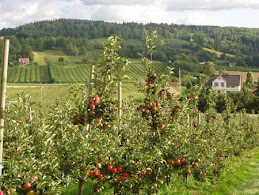










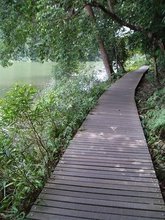







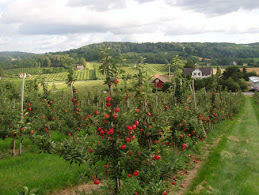



.jpg)
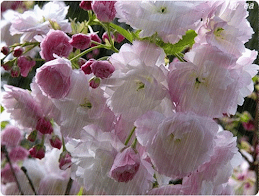.gif)
.jpg)



























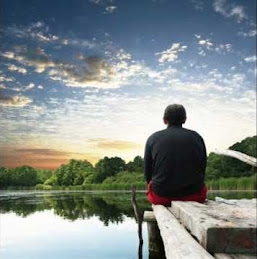





















%20-%20%E5%82%B7%E5%BF%83%E7%9A%84%E8%B7%AF%20(Sh%C4%81ng%20x%C4%ABn%20de%20l%C3%B9)%20-%20The%20Road%20of%20Sorrow%20(With%20Subtitle)_11.png)







No comments:
Post a Comment